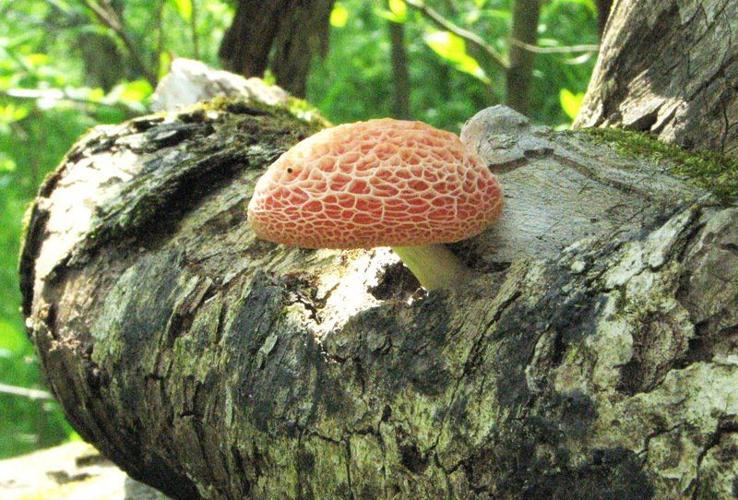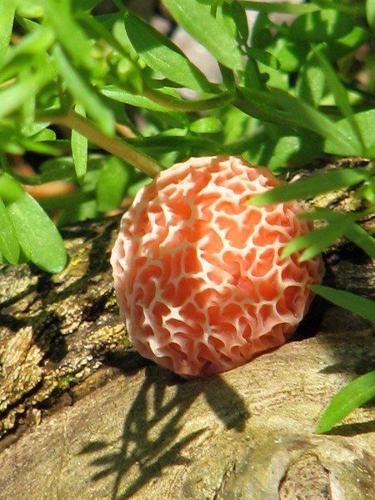Everyone knows that avid mushroom hunters are, at least when it comes to how many they’ve found and where they’ve found them, inveterate liars. Less than forthcoming with directions and pertinent landmarks, the typical seekers of springtime fungi have no intention of truthfully answering inquiries as to where and when they’ve filled their bread sacks. I am no different.
So all I will say about the where of an interesting find my wife, Joanie, and I made a few weeks ago will probably have to go to our graves with us. But the what, well, that’s a different story.
We are an odd couple when it comes to mushrooms. We both love to hunt them, but only Joanie craves them on the supper table. I have never liked the taste — or rather, the lack of it — of mushrooms. Flour and salt and pepper all you want, but I’m not, and never have been, a fan of fungus; I have faced derision for this apparent flaw for years. But hunting mushrooms is a passion, so we spend a little extra time in the woods in April and May, searching for that magical patch of morels that most “roomers” only see in their dreams.
By most accounts, this wasn’t a great year for morels; perhaps the cool spring contributed to their paucity; I haven’t heard nearly as many people bragging about their hauls this time. I suspect that hunters merely recycle photos from their bountiful years, just to keep their rivals wondering about the site of that secret mother lode.
But we are going to crow a bit this year, not for the big sponges we found, but for the two mushrooms we discovered in searching for the elusive morel. After spending the best part of an hour with no success at all one day a few weeks ago, we descended a slope in our woods with every intention of making our way to a nearby wetlands to see if we could spot a turtle or heron or colorful dragonfly. Ahead of Joanie by some distance, looking, I believe, up into an ancient sycamore tree at a nest, I heard her say, “I think you need to come over here and look at this.”
A deer skull perhaps? A bit of trash? Maybe a snake? Those were the thoughts that first crossed my mind when I heard her, that is until I saw the subject of her intense focus: a weird orange mushroom growing out of a rotting, barkless branch near the much larger corpse of a fallen tree.
I’m not exactly a character out of a James Fenimore Cooper novel, but I’ve spent my fair share of time in the woods over the years, and I had to admit to Joanie that the mushroom she’d found was unlike anything I had ever seen. Since I have gotten into the habit of carrying a camera on my hip, I snapped a half-dozen shots of the fungus, and after a few more minutes of wondering just what we had, we moved on.
By the time we got back to the house an hour or two later, I looked at the photos of the mushroom, convinced by then that I needed to get it identified, so I sent two of the pictures off to Dr. Peter Coppinger, an associate professor of biomedical engineering at Rose-Hulman, who just happens to have his PhD in plant biology. Within 20 minutes, Peter responded that he really hadn’t seen anything quite like it himself. He asked a colleague, who also hadn’t seen our mushroom before.
Coppinger’s interest was as piqued as ours, so he eventually got in touch with mycologists at the University of Tennessee, and only one had laid eyes on such a mushroom. Coppinger related, “It is extremely rare; so rare, that most field biologists haven’t seen this except in pictures.” He said that the mycologist who identified it relayed his congratulations to us for a “very special find.”
What we stumbled upon is called Rhodotus palmatus, an uncommon species of mushroom that was originally given the name Agaricus palmatus in 1785 by French botanist Jean Bulliard. Its name was changed in a 1926 publication by French mycologist Rene Maire, and it carries a number of nicknames, such as the “netted rhodotus,” the “rosy veincap,” and the “wrinkled peach.”
As it turns out, there’s a very good description of our mushroom in a Wikipedia entry, and a number of other fungi-related websites that I visited listed it, too. The rhodotus is “saprobic,” that is, it gets its nutrients from “decomposing matter,” which explains why we found ours growing out of a rotting tree branch. It has apparently been found growing on basswood and maple and horse chestnut trees, but is more commonly found on elms in heavily shaded and wet woodlands; some mycologists even suggest it is a byproduct of Dutch elm disease.
The most interesting thing I discovered about rhodotus is that it’s found most often in places like Poland, even New Zealand, but it is classified as “rare” in the United States. It is found in North America, and Indiana and Illinois seem to be the most popular spots. Conflicting evidence exists about its edibility, but since I have a standing policy against taste-testing what looks like a glorified toadstool — and I have seen things growing on shower room floors that look about as appetizing — I decided to take a pass.
I have to give Coppinger a lot of credit for taking his job seriously. Within a few days, I was leading him and his professional photographer father, Jim, to the spot where we had uncovered the rhodotus — in fact, two, since we discovered another one growing under the limb the next day. Jim, who dressed the part and looked like he was straight out of “Mutual of Omaha’s Wild Kingdom,” spent over an hour taking dozens of photos of the mushrooms, lying on the chigger-infested ground snapping shots from every conceivable angle. I also introduced the pair to some of our steeper hillsides, which made both consider hiring a Sherpa if they make a return visit.
In a way, it was too bad that we got our mushroom identified. In the back of my mind, I saw the Lunsford name emblazoned in the print of musty mycological guidebooks forever. Move over Carolus Linnaeus and Alexander von Humboldt, the Lunsfords are here!
Just don’t ask me to eat what we find.
Mike Lunsford can be reached by email at hickory913@gmail.com, or c/o the Tribune-Star at P.O. Box 149, Terre Haute, IN 47808. To learn more about his writing and speaking, visit his website at www.mikelunsford.com.






















Commented
Sorry, there are no recent results for popular commented articles.